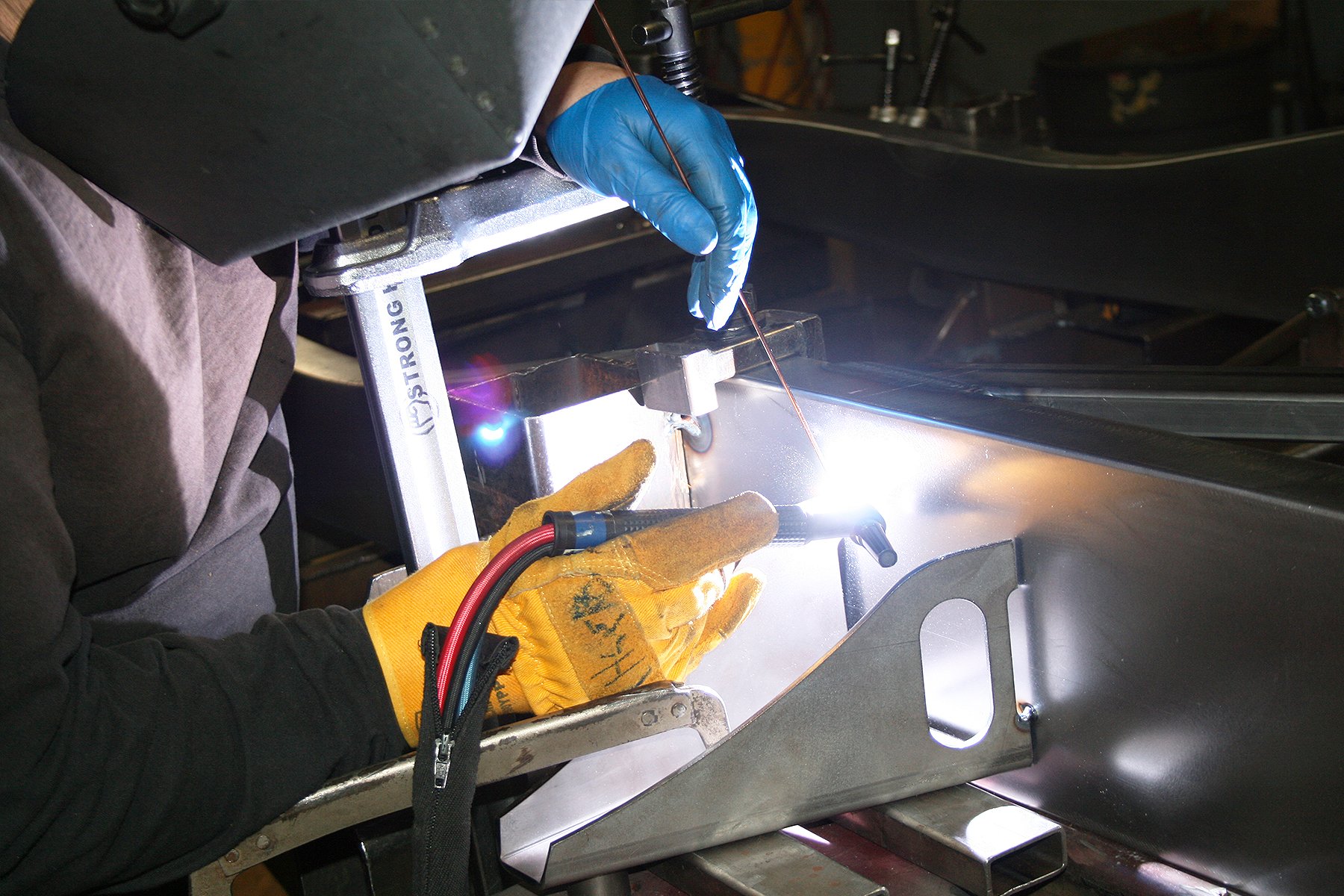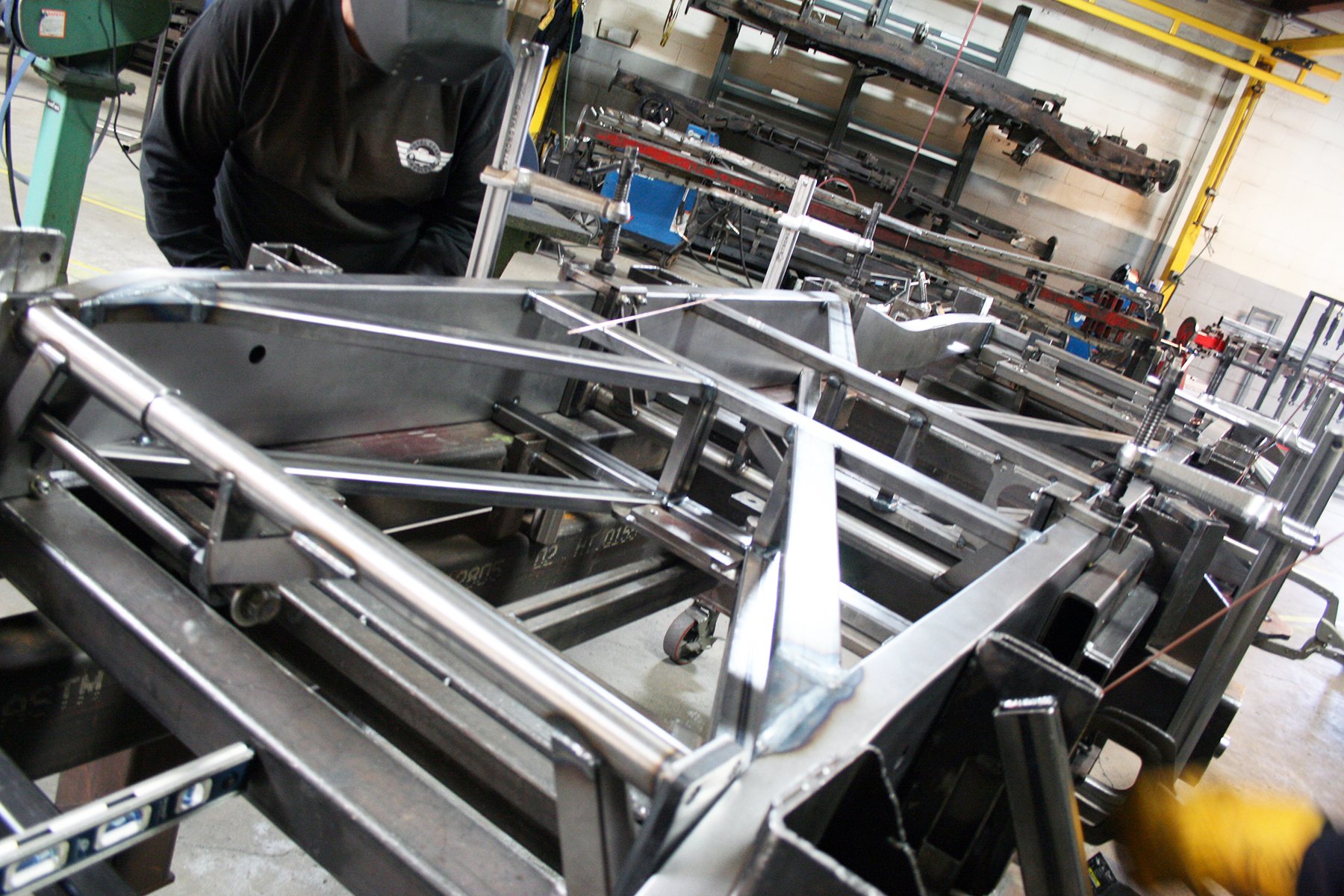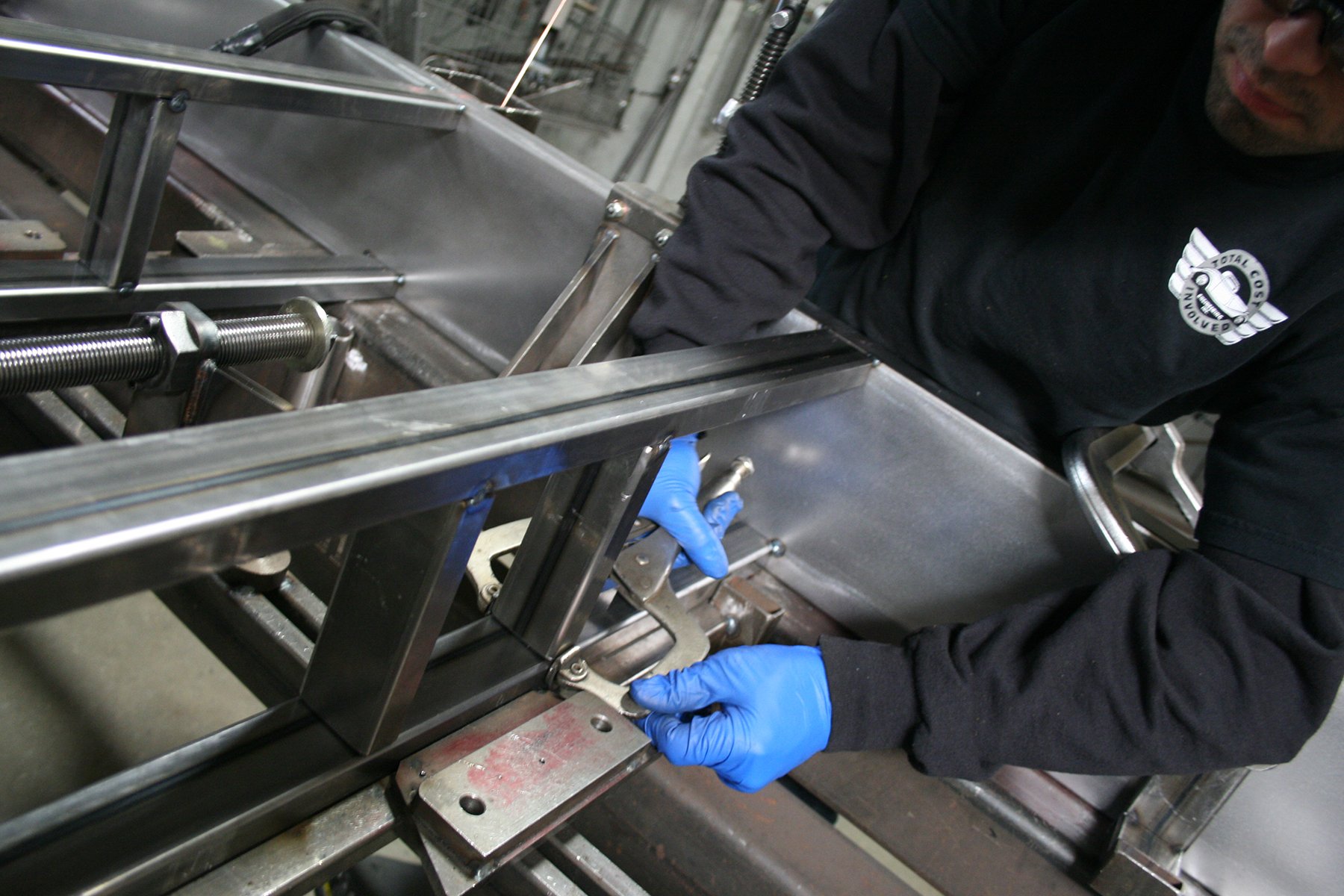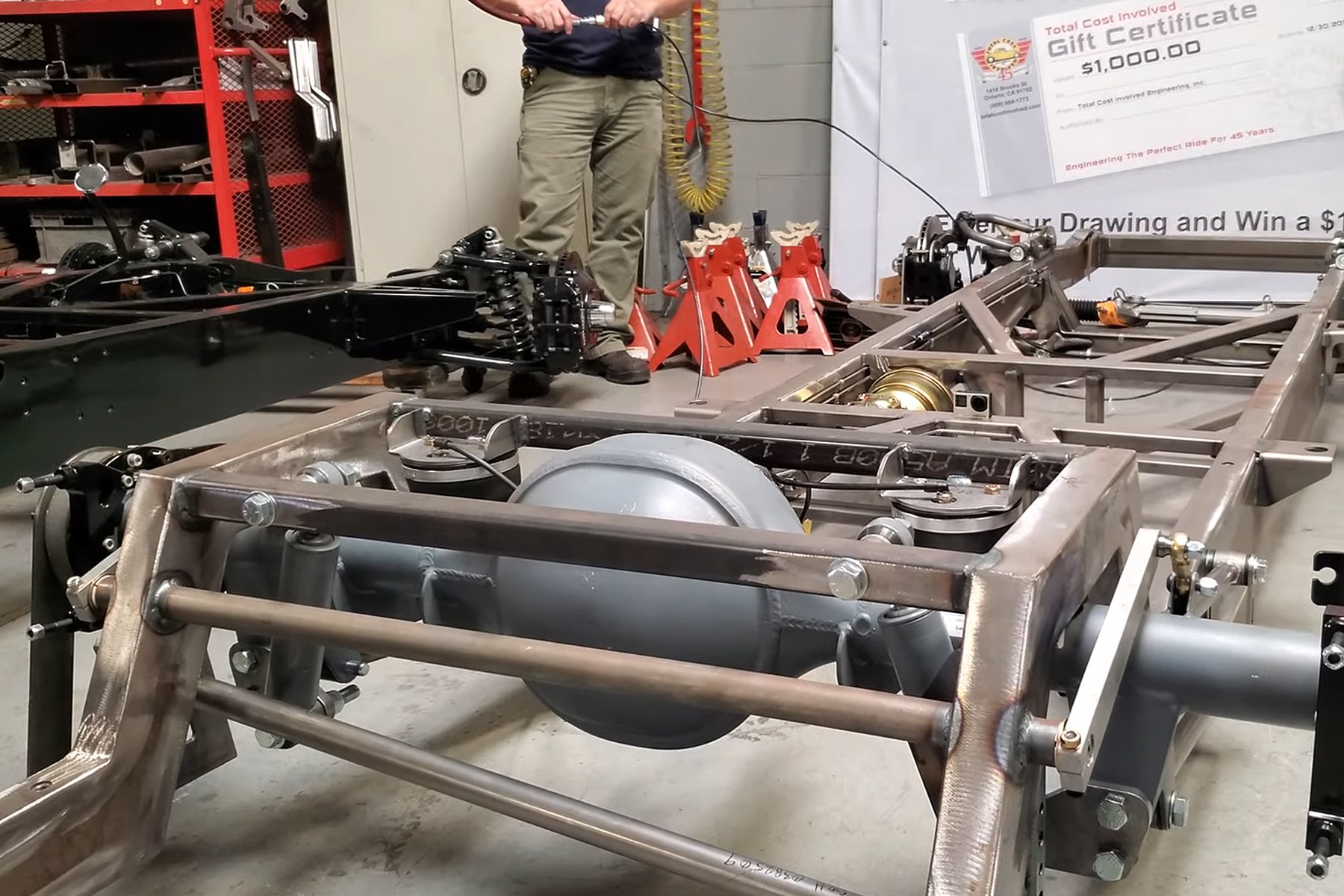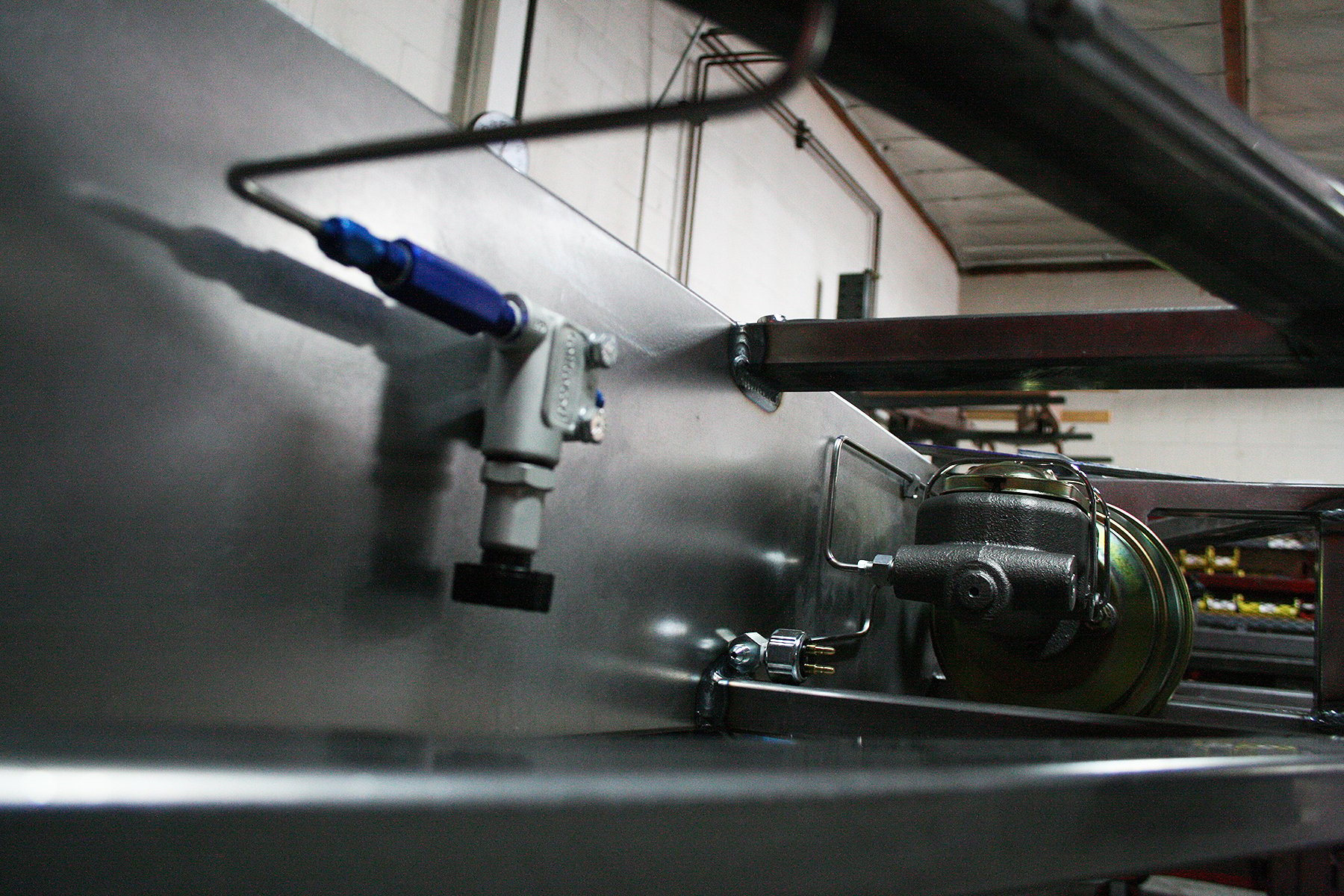Building a hot rod can involve a ton of individual choices when it comes to selecting components that will sum up your creation’s individuality. The “style” can be the aggregate of retro parts, high-tech hardware, or a blend somewhere in between. The chassis, though, is a definitive starting point that can give your new car or truck its most characteristic appearance for all other pieces and parts to follow.
TCI's proven chassis for 1955- to 1959-era Chevy trucks were first offered with more traditional suspensions such as a coil spring independent front suspension and either leaf spring or four-link rear suspension. The Grounded Chassis line allows this era of Chevy truck to airbag itself well into the weeds.
With that in mind, we reached out to Jason Wilcox, marketing coordinator at Total Cost Involved Engineering (TCI), concerning the company’s new Grounded Chassis and its expanding applications.
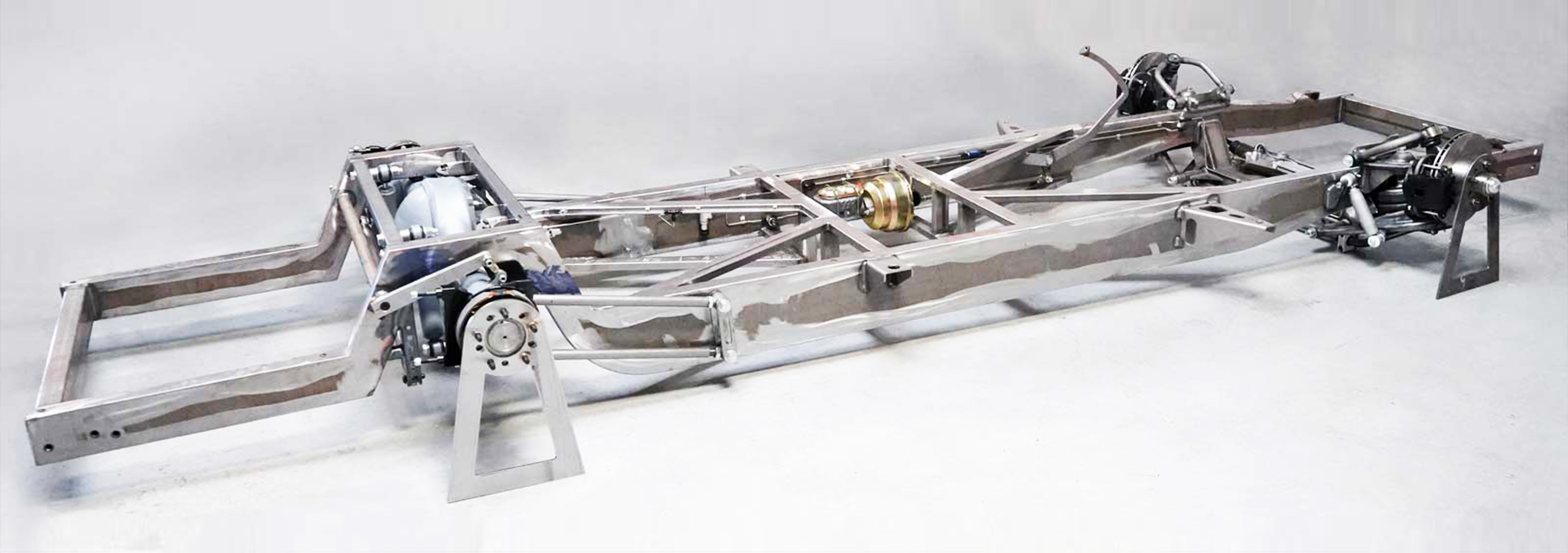
“The recent Grounded Chassis models use main rails with an extended height ranging from 6- to 8-inches for increased rigidity,” Jason describes.” With the front crossmember raised and the rear frame rails kicked up, the chassis can sit 1-inch from the ground while using 26-inch front and 28-inch rear diameter tires.”
This is the building block for the enthusiast who wants to achieve that slammed stance with all the proper suspension and frame geometry in place. It takes a far greater effort than many might think to create an overall chassis and suspension that will “lay frame” and also achieve proper ride height clearance.
Jason adds, “If you don’t carefully factor in your body-shell clearances and adequate suspension geometry, you could end up with either a hacked-up body or scary steering and/or suspension movement.”

“Building the jigs we use is a big project,” explains Jason. “You can run out of room very quickly when you have many different jig tables in your shop. The key is to engineer various cab mounts and suspension fixtures for different era vehicles that fit upon the same overall jig.
Getting Grounded
On top of the company’s ’50s Chevy-truck applications, the Grounded Chassis line is also expanding into the ’60 through ’87 Chevy C10 models. TCI’s goal is to re-engineer this same chassis jig to not only fixture the earlier model truck chassis but also to exchange individual fixtures within the master jig to accommodate as many models as possible.
Jason notes that even though TCI has offered proven chassis for many models of street rods, muscle cars, and classic trucks since 1974, as they work to engineer the new C10 Grounded Chassis, it is a unique experience for him to see the engineers and fabricators taking hundreds of measurements from stock frames and bodies to develop new products.
"The R&D department came up with a game plan, which will allow us to take the later profile of the squarebody Chevy C10 frame and work that into our original chassis jig." He continues, "it is very impressive that the guys in the shop can now build our traditional frames or the Grounded Chassis line for different-era trucks, all on the same jig."
“What we are doing next for the C10, is that instead of the frame rails kicking outward and then back in, such as with the ’50s-era trucks, they will actually be parallel rails,” Jason comments. “But the beautiful thing behind all this is we will have one set of frame rails—and possibly even a center section—that will work on all C10s.”
This new Grounded Chassis will be available soon for the 1967 to ’72 Chevy C10 trucks. He notes they will ultimately engineer the jig system to provide for vehicles ranging from 1960 all the way to 1987 General Motors trucks. To take on the addition of the ’67 through ’72 Grounded Chassis models, TCI has a ’72-Chevy shop truck that is its primary R&D vehicle. It currently has a heavily modified stock frame, where engineers are perfecting the best suspension geometry while overcoming necessary body clearance issues. Jason comments, “This truck is kind of near and dear to my heart.”
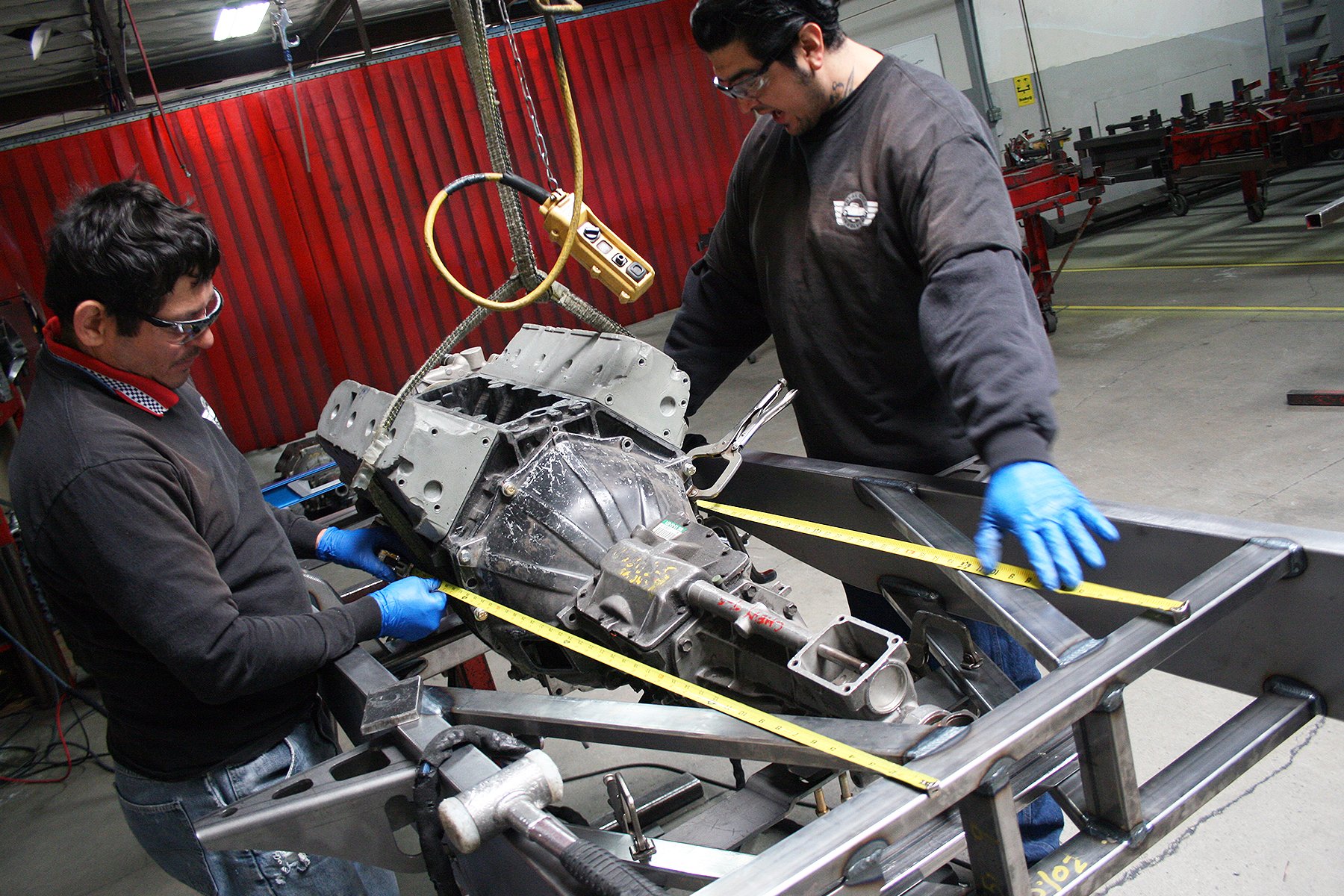
“The later model transmissions used by enthusiasts keep getting bigger, taller, wider, and especially longer,” states Wilcox. “So, the frame center section is getting pushed back more and more it seems. Combined with the popular LS-engines, these new 8-speed automatics are all the rage right now, so we need to factor that into our chassis designs.”
Wilcox points out the only major changes among the expanding C10 line will include the locations of the cab mounts, supports, and bed mounts between models. He also explains that one of the more significant issues they want to tackle is for the chassis to accommodate the ever-increasing size of drivetrains used by today’s enthusiasts.
Old School Meets New-Age Tech
The TCI team created an interesting experiment between new- and old-school engineering when it came to this new Grounded Chassis effort. Measuring, plumb-bob work, and more measuring is the procedure that TCI has utilized in developing its many chassis designs over the years. The Grounded Chassis is no exception.
“There are roughly 100 or so diagonal-, horizontal-, and XD-measurements that are needed for one chassis,” Jason describes. “We called one of our Camaro buddies, and he brought out his 3-D imaging system. It was kind of neat that once he plotted everything, our overall manual measurement skills were spot-on. I think we had one overall front-to-back measurement that was off by roughly 1/32-inch.”
It is a bit of a process to get there, but once the frame rails and bed mount fixtures are completed, the remaining chassis components fall together.
With the utilization of the sales manager’s 1966 Chevy truck, it’s an example of how various enthusiasts around the business are collaborating to get all the variances for the C10-chassis options correct.
“There was a degree of relief when we figured out we could use one overall jig with various filtering to construct the spread of tracks and chassis designs,” Wilcox details. “Trust me when I say, building an entirely new jig, then housing it somewhere when it is not in use is tough. Our chassis jig designs are sturdy and weigh thousands of pounds. They’re huge.”
Getting Suspended
For the suspension on the new Grounded Chassis, the rearend will typically be set up with a 9-inch housing and four-link suspension design. According to Jason, the complete rearend options come from Currie Enterprises with 31-spline axles and a differential that will handle approximately 600-horsepower.
For the TCI Grounded Chassis, they, of course, are offering only air bagged suspensions. The air lines are included and are all prefabricated 1/4-inch stainless steel. All the flexible hoses required around the suspension points are also included.
“If the customer so chooses, he can even send us his air control system,” Wilcox explains. “We can also plumb in his tanks and pump system within any desired area. There are hundreds of design options with the air ride system.”
All the TCI-chassis offerings are available with a wealth of brake choices. The standard kits come with drum brake assemblies on the rear and General-Motors-style disk and big bore calipers with 11-inch rotors on the front. The options list includes disc brake upgrades for the rear and 12-inch brake system for the front.
"If a customer wants to use a traditional firewall mount for the brake pedals and boosters, they can do that too," Wilcox elaborates. "However, our standard master cylinder is located down within the chassis rails."
“We also have Wilwood Engineering options such as 11-inch rear disks with a matching system in the front,” Wilcox says. “We can also supply some killer Wilwood 12-inch brakes with four-piston calipers.”

“These chassis are definitely designed to drop into the weeds without sacrificing chassis or suspension strength,” finishes Wilcox. “Some chassis designs I have seen sacrifice framerail size to fit under the bed and body floor pans. Our 6-inch-tall frame rails will not sacrifice any strength.”
On the high side of the Grounded Chassis suspension movement, when the airbags are fully aired up to go down the road, you get a 5-inch ride height when combined with a 26- and 28-inch-tall rear tires. These two extremes in ride height—while not sacrificing safe suspension geometry—demonstrate the accomplishment of giving the TCI group of designers and fabricators their deserved pride.
From a group of chassis professionals who have been designing and manufacturing chassis for street rods, muscle cars, and their expanding models for custom trucks for over 45-years, Total Cost Involved Engineering has been the starting point for countless custom vehicles.
Whether varied chassis models are used to go miles down the highway, carving a path on challenging road courses, or now, laying low with the new Grounded Chassis, TCI will continue to proudly offer new innovations.
{ad: BLOCK}








